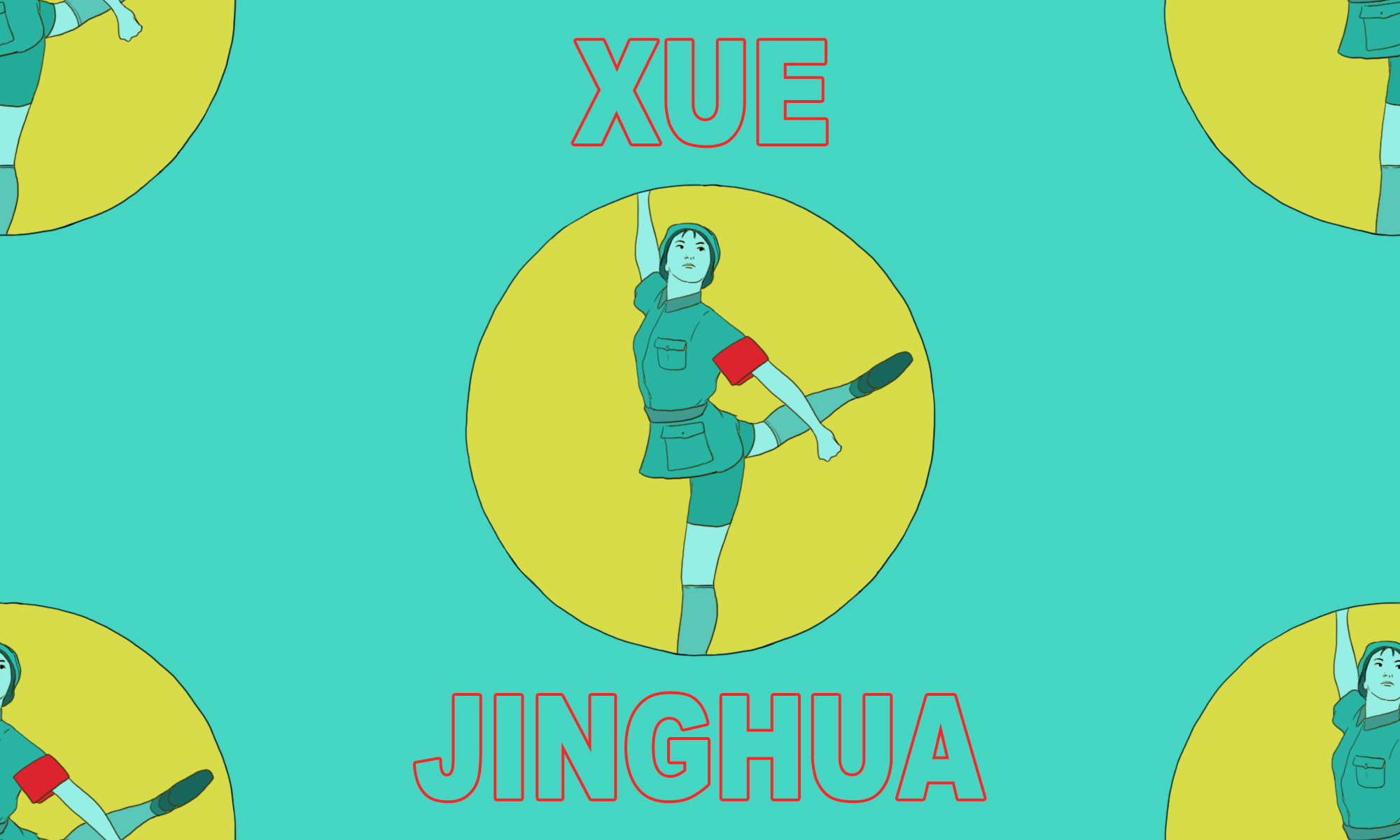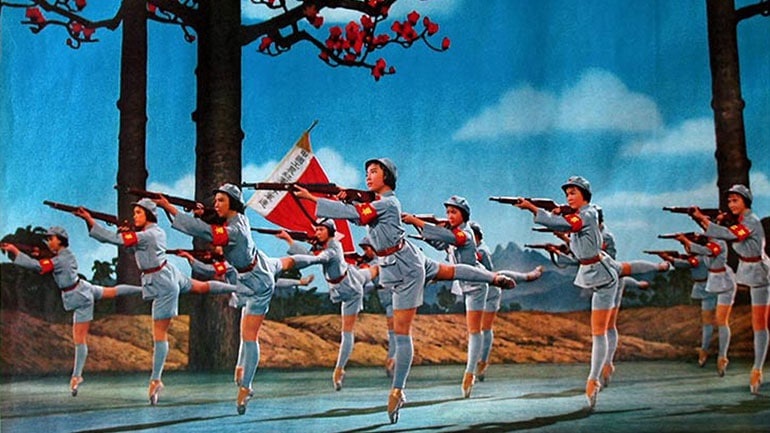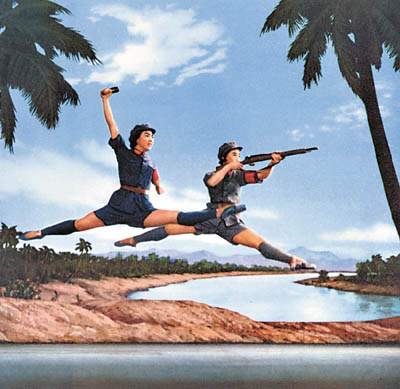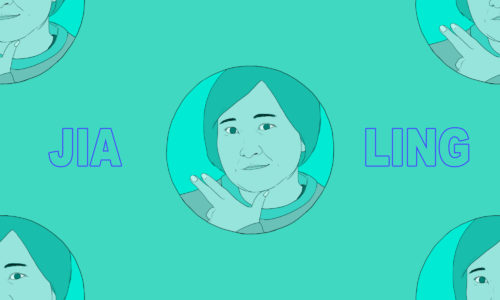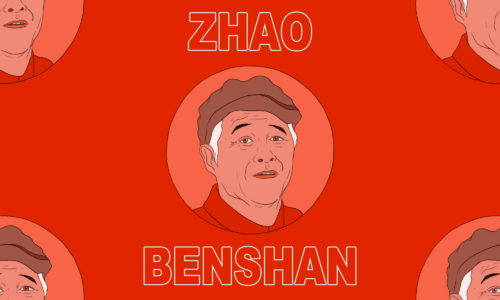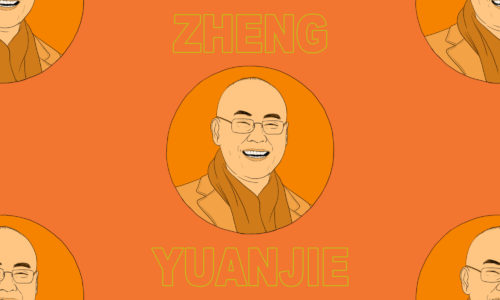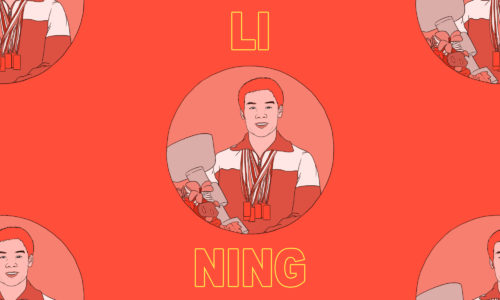Never before had ballerinas looked so deadly. In 1972, during his celebrated visit to China, President Richard Nixon was treated to a performance of The Red Detachment of Women, one of the most bizarre products of the Cultural Revolution. The piece, set in an all-female Red Army Special Company in 1930s Hainan, sees Western ballet adapted into “revolutionary ballet.” To quote one researcher: “Women in uniform replace dancers in tutu-style skirts, while the pas de deux represents either class conflict between abuser and abused or a political liaison between the communist saviour and the woman in need of salvation.” It’s high communist kitsch, arabesques and pirouettes performed en pointe with rifles cocked and grenades primed:
The ballet conformed to Mao’s demands that China ”make the past serve the present and foreign things serve China.” It was one of the eight “model dramas” (样板戏 yàngbǎn xì), one of the few cultural products that could acceptably be shown across the nation. Nixon was supposedly impressed with what he (inaccurately) called a “musical,” turning to Jiāng Qīng 江青 (a.k.a., Madame Mao) and asking for the names of the creatives behind it. An easy question for Jiang — it had been one of her pet projects.
Her answer was bland and textbook, for an era when individuals were given no credit: it had been “created by the masses.” But this overlooks the leading ballerina, who, thanks to being in one of the few licensed pieces of entertainment people could watch, is still known to countless older Chinese. She is Xuē Jīnghuá 薛菁华, ballerina extraordinaire.
Who is Xue Jinghua?
The PRC’s first celebrity ballerina. Born in 1945 in Jiangsu, Xue was taken to Beijing by her mother when she was just 11. Her mother had heard about the new Beijing Dance School that had recently opened in the capital, complete with an imported Soviet instructor. Ballet had already been imported to Chinese cities by Russian émigrés during the 1920s and 1930s, but had been watched and practiced only by elite, cosmopolitan Chinese. This was hardly the dance form for the CCP’s new China. But on the other hand, there was diplomacy to consider: the Soviet Union had been adapting the dance form within its own revolution. Perhaps it could be of use, albeit once given a Chinese twist.
Although Xue hadn’t had any training in her life, her audition was a success — she looked like a ballerina. Ballet training is gruelling and extremely competitive, but Xue worked hard enough for seven years to earn a place in the newly organized National Ballet ensemble.
But what were these ballet dancers to perform? An urgent question when most ballet was bourgeois — indeed, all the students had to stage were 19th century classics like Swan Lake, Giselle, and La Esmerelda. They had to justify their relevance — as Paul Clark has written in The Chinese Cultural Revolution, “On the eve of the Cultural Revolution, there were about ten major ballets in the repertoire of the two ballet companies based in Shanghai and Beijing…Ballet had no hold anywhere else.”
Practitioners who met for a symposium in 1964 decided ballet still encouraged Western “groveling” and must follow Mao’s three principles: Nationalization, Revolutionization, and Massification. A ballet could be written on something inspiring, such as the true story of the all-female Red Army Special Company 2nd Independent Division, who battled Nationalist fighters in Hainan between 1927 and 1937. A film had already been made of this in 1961, filled with rousing ditties of female valor.
It was made into a ballet in 1964. To prepare for their roles, the ensemble was sent to live on army camps and to Hainan, practicing drills and rifle aiming. Initially cast in a supporting role, the story goes that Xue replaced the nation’s prima ballerina, Bái Shūxiāng 白淑湘, in the lead role with a little help from the top. Either Zhōu Ēnlái 周恩来 or Jiang Qing singled her out for praise and pushed for her to receive the spotlight. Jiang may have said, “She reminds me of myself when I was her age” (but given Jiang’s youthful antics, let’s hope the resemblance was only skin deep).
The casting proved a success. Xue cut a striking figure, tall and dressed in red as the wronged peasant Wu Qinghua, driven by revenge against the tyrant landlord Nan Batian (“tyrant of the south”). She enlists in the regiment to ensure her vendetta is accomplished, but learns through the noble commissar Hong Changqing (played by Jiang Qing’s favorite male dancer Liú Qìngtáng 刘庆棠) that Communism is much more than just getting revenge.
By 1967, People’s Daily (pushed by Jiang Qing’s cultural policies) had urged this model production be promoted across the nation, with Xinhua praising how it had “eulogized the workers, peasants, and soldiers who are the masters of history.” Theaters scrambled to put on their own production, and whereas before there had been a good deal of experimentation with local and national dance forms, now “the entire country’s dance stage turned into a deformed landscape,” writes Wang Kefen and Long Yinpei, “in which ballet was the single blossoming flower.” As pointed out by Emily Wilcox in Revolutionary Bodies: Chinese Dance and the Socialist Legacy, at the whim of one woman — Jiang Qing — Western ballet had suffocated a national dance culture.
The Red Detachment of Women was turned into a film with Xue at the head in 1971. Full to the brim with revolutionary fervor, the movements of the dancers are injected with the strong stances, firm-set faces, and raised fists of a socialist realist mural. There are tearful caressings of the CCP flag and faces aglow in the red light of communism. Even today, they make for striking postcards in propaganda museums.
The People’s Daily hailed how the film “broke the restrictions imposed by the makeup of the Western orchestra,” making use of Chinese national dance forms and musical styles. But in reality these only make cameo appearances, with little impact on the primary Western styles. Although Xue was on stage the longest of any character, she wasn’t singled out for praise (the talent of individuals merely aided the collective endeavor) — she only became a sensation when the film, one of the few films allowed, made it big. There are stories of audience-goers queueing up over 60 times outside cinemas just to see her, and many still talk of her incredible zǐjīnguān 紫金冠, a ballet move that takes a great deal of flexibility and makes for a striking photo:
Xue became the lead for a production that was performed for visiting heads of state. But after her performance with Nixon in 1972, the exhaustion caught up with her. Zhou Enlai personally persuaded her to return to dance, saying she still had at least five years left in her. She was able to perform for President Pompidou of France — the first western European leader to visit since 1949 — when he arrived in 1973.
She would do little beyond that, and it’s not quite clear why she retired at just age 28, aside from exhaustion. She was investigated for her relation to the Gang of Four in 1976 — Jiang Qing was one of the opera’s masterminds after all, and her co-star Liu Qingtang had used his own power with Jiang to sexually exploit younger women, also denouncing a large number of dancers during the revolution, even driving some to suicide. She worked as a lowly seamstress to other ballerinas for five years and then toured abroad, dancing the Red Detachment in the U.S. in 1978. She started a family and went to become a ballet instructor in the ’80s and ’90s, shuttling between Hong Kong and Shenzhen.
The spell broke for the Red Detachment as soon the Cultural Revolution ended, routinely trashed (according to Walter Meserve in Modern Drama from Communist China) as “artless, sterile, without depth, without truth, and without reality.” Although a relic, the ballet limps on. It occasionally goes on soft-power tours abroad (to the bemusement or anger of locals) and is still played out on major stages across the country, presented as a heartwarming, patriotic story of Chinese heritage.
Chinese Lives is a weekly series.
